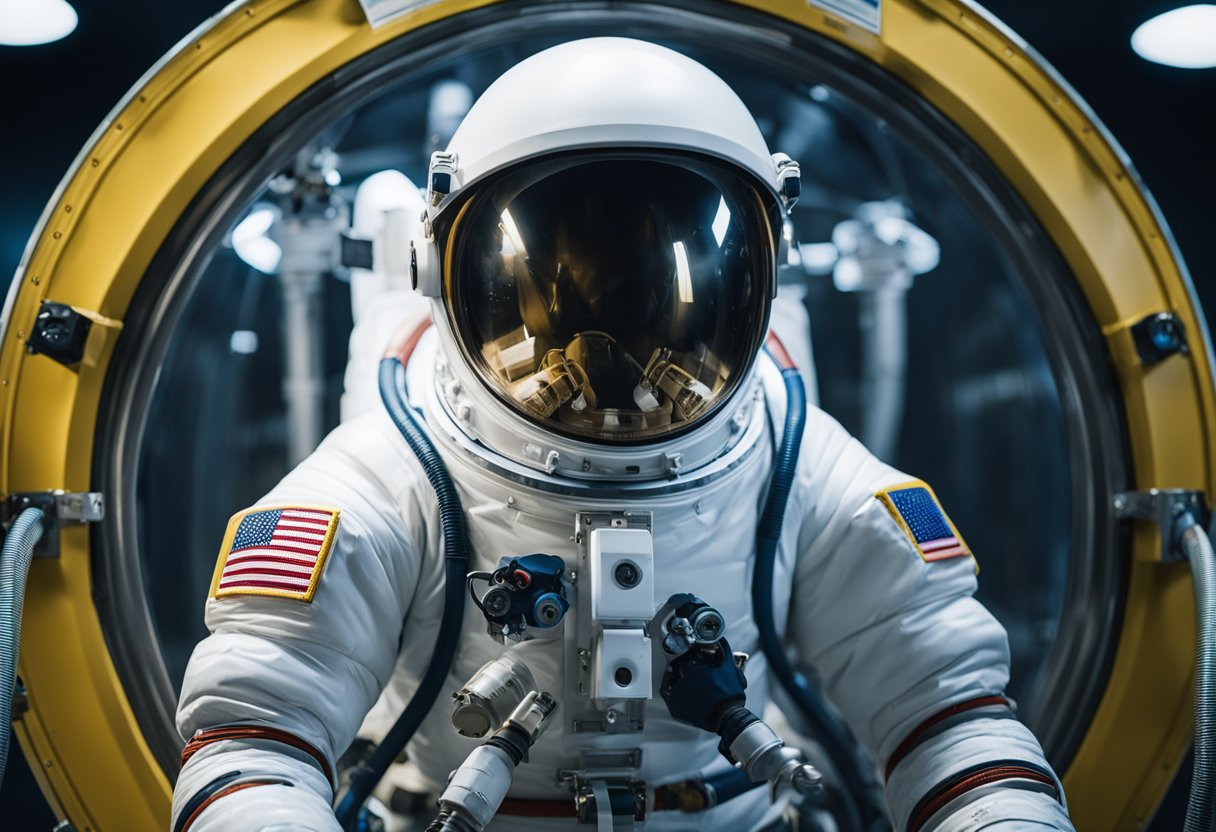
Space suits serve as critical lifelines for astronauts, providing them with the necessary protection and functionality needed for operations outside of spacecraft. These garments are highly complex systems designed for survival in the harsh environment of space; they manage oxygen levels, regulate temperature and ensure the mobility required for extravehicular activities (EVAs), commonly known as spacewalks. The evolution of space suit technology reflects the advancements in our understanding of space as well as our growing ambitions for exploration.
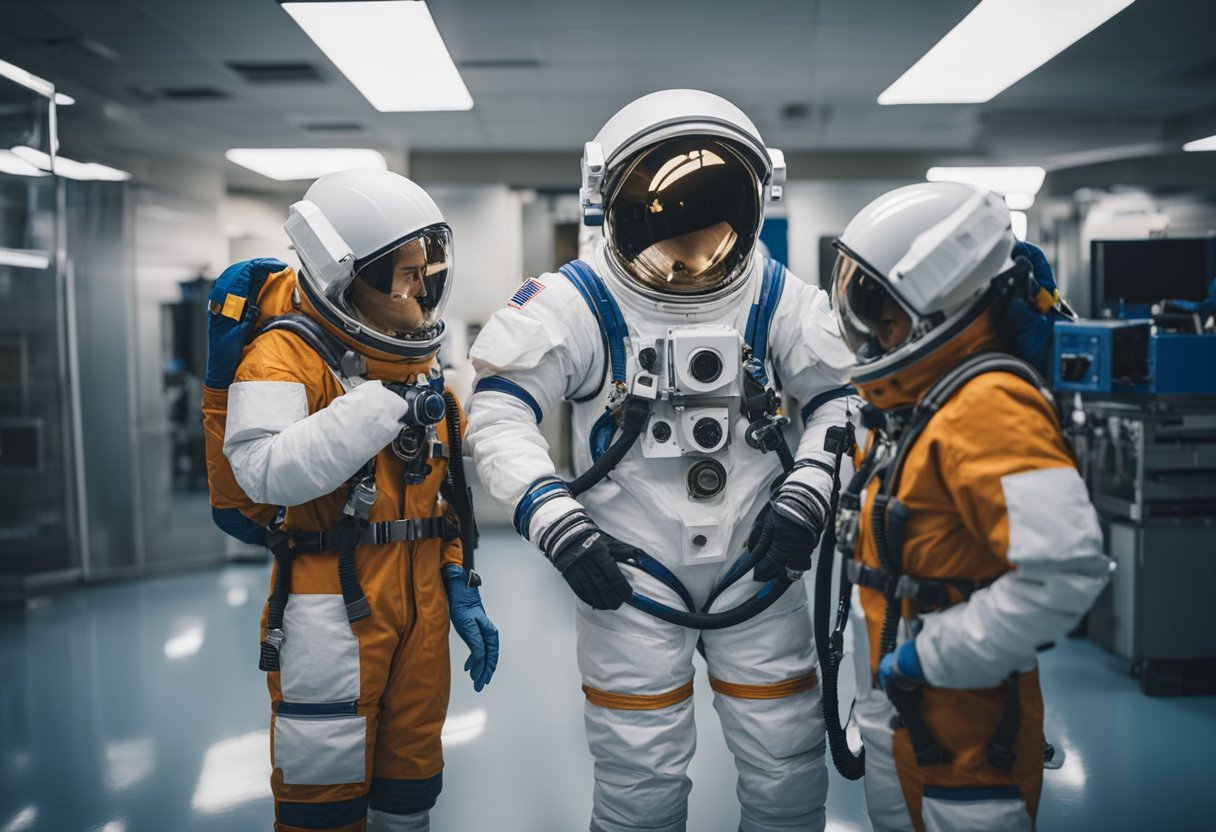
Our journey through the cosmos necessitates spacesuits that are not only safe but also versatile across different celestial bodies, from the weightlessness of space to the rugged terrain of the Moon and Mars. These suits are equipped with emergency protocols to safeguard astronauts in case of unforeseen contingencies. As we step into an era where commercial spaceflight and space tourism are becoming a reality, space suit design continues to respond to the demands of a broader range of space travellers.
Spacesuits, as critical components of astronautical engineering, have undergone an impressive evolution, reflecting advancements in technology and the changing requirements of space exploration.
During the early Mercury and Gemini programs, spacesuits were designed to ensure astronaut safety in case of cabin depressurisation. These suits, such as the Mercury suit, were modified versions of military high-altitude flight suits, with limited mobility and functionality.
With the Apollo missions, the goal of lunar exploration necessitated the development of suits like the A7L, which afforded much greater flexibility and autonomy. They were built to withstand the Moon’s harsh environment, including protection against micro-metiorids and extreme temperature variations. NASA led these efforts, culminating in the iconic images of astronauts in bulky, pressurised suits walking on the Moon.
Following the Apollo era, the Skylab and Space Shuttle programs required spacesuits for extravehicular activities (EVA) and onboard tasks. The design shifted towards enhancing the suits’ operational capabilities and duration. Shuttle era suits needed to be more durable and adaptable for repeated use in spacewalks and servicing missions.
With the establishment of the International Space Station (ISS), the collaboration between different space agencies brought in various suit designs, including Russia’s Orlan suit. Used extensively for spacewalks, the Orlan suits allowed for a modular approach, able to be tailored to individual cosmonauts’ needs.
In recent years, we’ve seen significant strides in spacesuit design with the development of
NASA’s xEMU, which stands for Exploration Extravehicular Mobility Unit. This next-generation suit aims to support future Apollo-like missions to the Moon and Mars, offering advanced mobility and life-support systems suitable for a wider range of activities and environments.
Now we look towards a future where spacesuits might not only support professional astronauts but also the participants of emerging space tourism ventures like SpaceVoyageVentures.com. As our ambitions in space continue to grow, so too will the capabilities of the spacesuits, which protect and enable us in the final frontier.
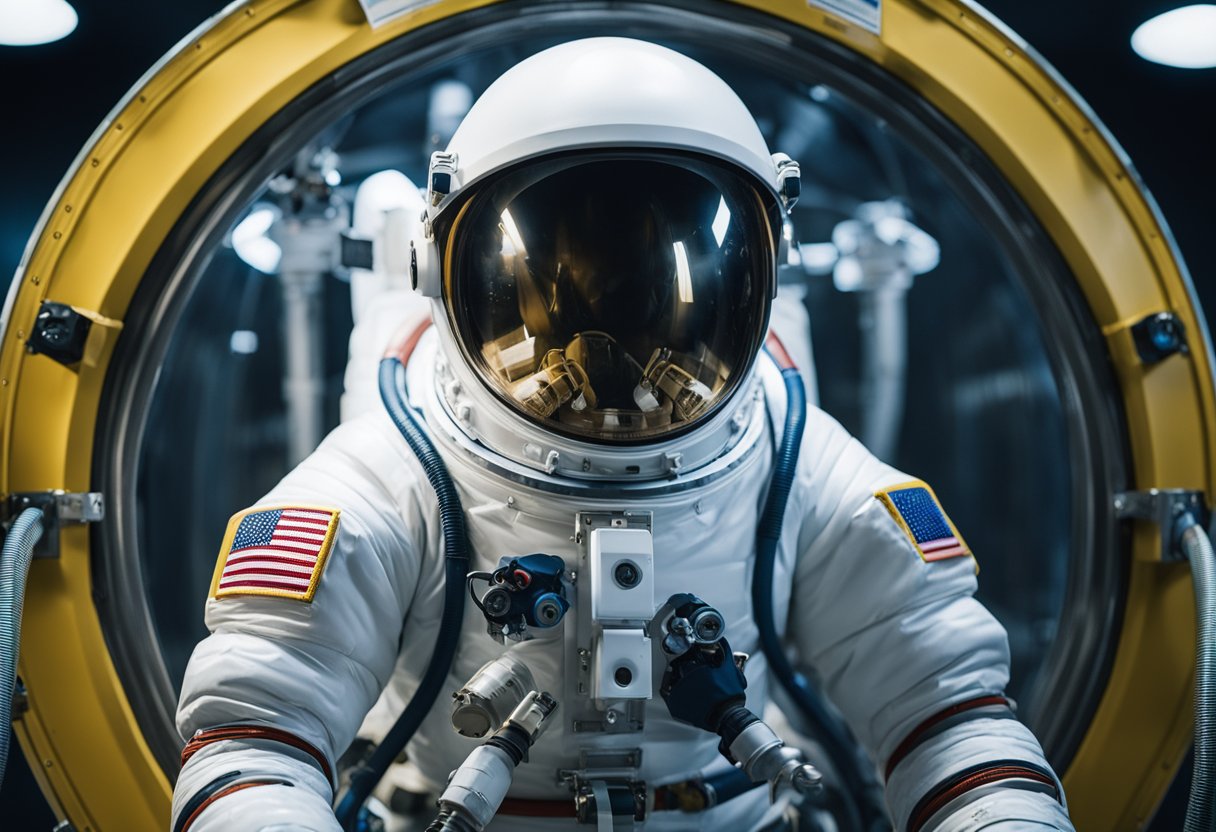
In modern space exploration, the evolution of spacesuit design and technology plays a crucial role in the safety and functionality of astronauts. Our focus is to ensure that the materials, mobility features, life support systems, and pressure regulation in these suits meet the rigorous demands of space environments.
Spacesuits are engineered using multiple layers to protect astronauts against the extreme conditions of space. The outer layer is typically made from resistant materials that shield against micro-meteoroids and space debris. Meanwhile, the inner layers include a bladder layer for maintaining pressure and a laminated layer that holds the life-support system in place. Advancements in materials science have continually improved the durability and resilience of these critical layers.
Effective spacesuit design incorporates specialised bearings at the joints to facilitate mobility while maintaining an airtight seal. These bearings are crucial in areas such as the hips, knees, and shoulders. The Extravehicular Mobility Unit (EMU) is a prime example of a suit that enables substantial range of motion, which is key for tasks requiring fine motor skills and extensive movements.
Crucial to astronaut survival, the life-support system regulates oxygen, removes carbon dioxide, and ensures thermal comfort. The Portable Life Support System (PLSS), integrated within spacesuits like the EMU, provides necessary life-sustaining resources during spacewalks. This system includes controls for temperature, warning devices, and communication essentials to monitor and maintain astronaut health and safety.
Traditional pressure suits were designed to solely maintain body pressure and provide basic life support. Contemporary spacesuits such as the EMU integrate both pressure functionality with advanced life-support systems. This modern suit technology is not only fundamental for maintaining life but also equipped for complex missions, including those on the International Space Station. These suits are a testament to decades of design innovation and material advancements in protecting astronauts from the harsh vacuum of space.
As experts on space travel, we understand the paramount importance of safety in the hostile environment of space. The advancement of safety features and emergency protocols ensures the well-being of astronauts during extravehicular activity (EVA) and in emergency situations.
Our Advanced Crew Escape Suit (ACES) serves as a critical piece of safety equipment designed to protect astronauts during ascent and re-entry. It is a pressurised survival suit equipped with a complex life-support system. The ACES includes a restraint layer that maintains suit shape under pressure and safety tether attachments to ensure astronauts can be secured to their spacecraft or the International Space Station.
Our safety protocols integrate the use of tethers and restraint systems to prevent astronauts from drifting away during EVA.
Our commitment to safety extends beyond Earth. Through careful planning and rigorous design, we continue to elevate the safeguards that protect those who travel to the cosmos.
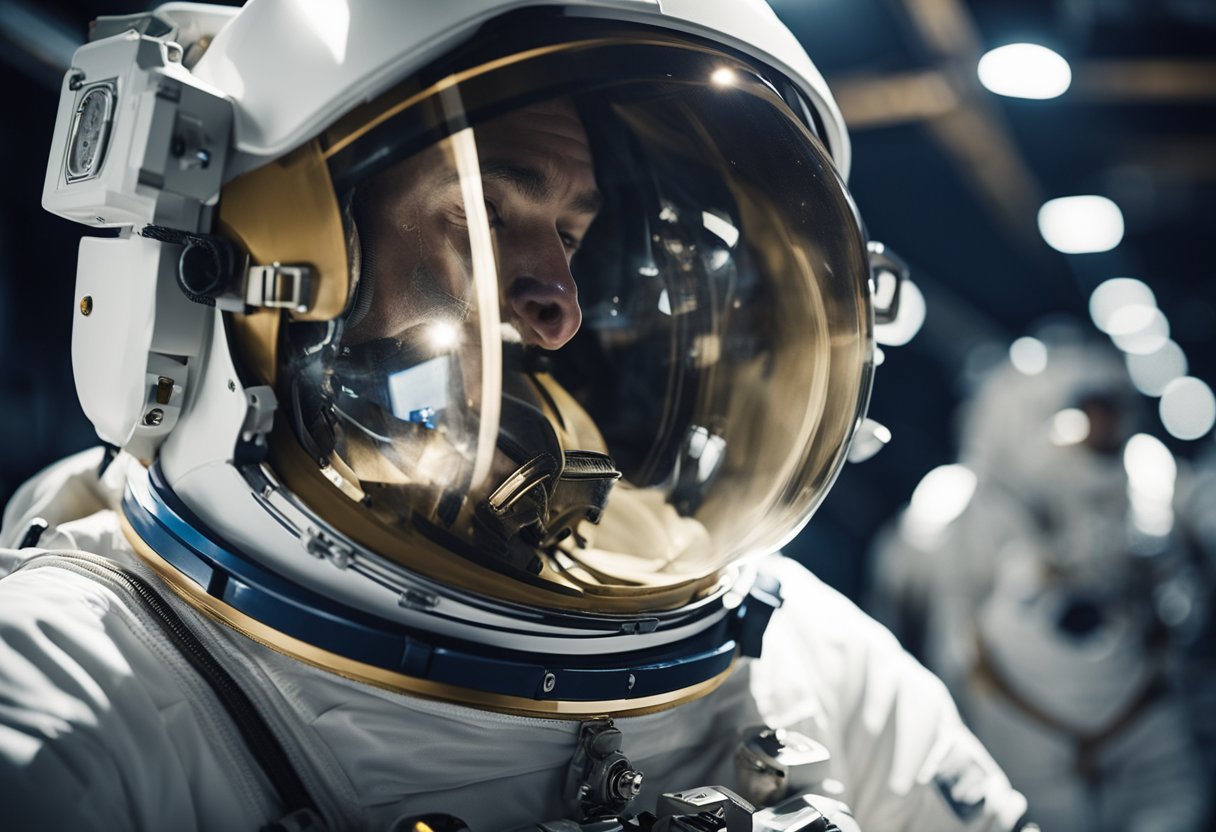
In the void of space, astronauts rely on their Extravehicular Mobility Units (EMUs) to perform activities outside the spacecraft. We refer to these operations as spacewalks or extravehicular activities (EVAs). The functionality of these spacesuits is crucial for missions and covers a breadth of tasks, from maintenance to exploration.
Tools: For efficient mission progress, our suits are equipped with a variety of specialised tools that attach to the suit or float freely in space. These tools are designed to be manipulated with ease, even when wearing the bulky gloves of an EVA suit.
Docking: Our EVA suits interface seamlessly with spacecraft docking mechanisms. This allows astronauts to attach themselves safely to the spacecraft or other structures, ensuring stability during complex tasks or when using tools that require precise control.
Our training includes a variety of spacewalking techniques, ensuring adaptability in unpredictable scenarios. To manoeuvre, astronauts use handrails and their own agility, supported by the EMU’s life support and propulsion system, allowing for a range of movements from the simple translation to complex assembly tasks.
Challenges: Despite their sophistication, EVAs present unique challenges, such as the need for substantial protection against space radiation, micrometeoroids, and extreme temperatures. Overcoming these challenges requires constant innovation in suit design.
Enhancements: Our latest suit models have been enhanced for increased mobility and reduced fatigue. As the availability of space travel to civilians from organisations like SpaceVoyageVentures.com draws closer, the development of more user-friendly suits remains a top priority. The integration of advanced materials and technology will continue to evolve the EMU, striving for a balance between safety and functionality.
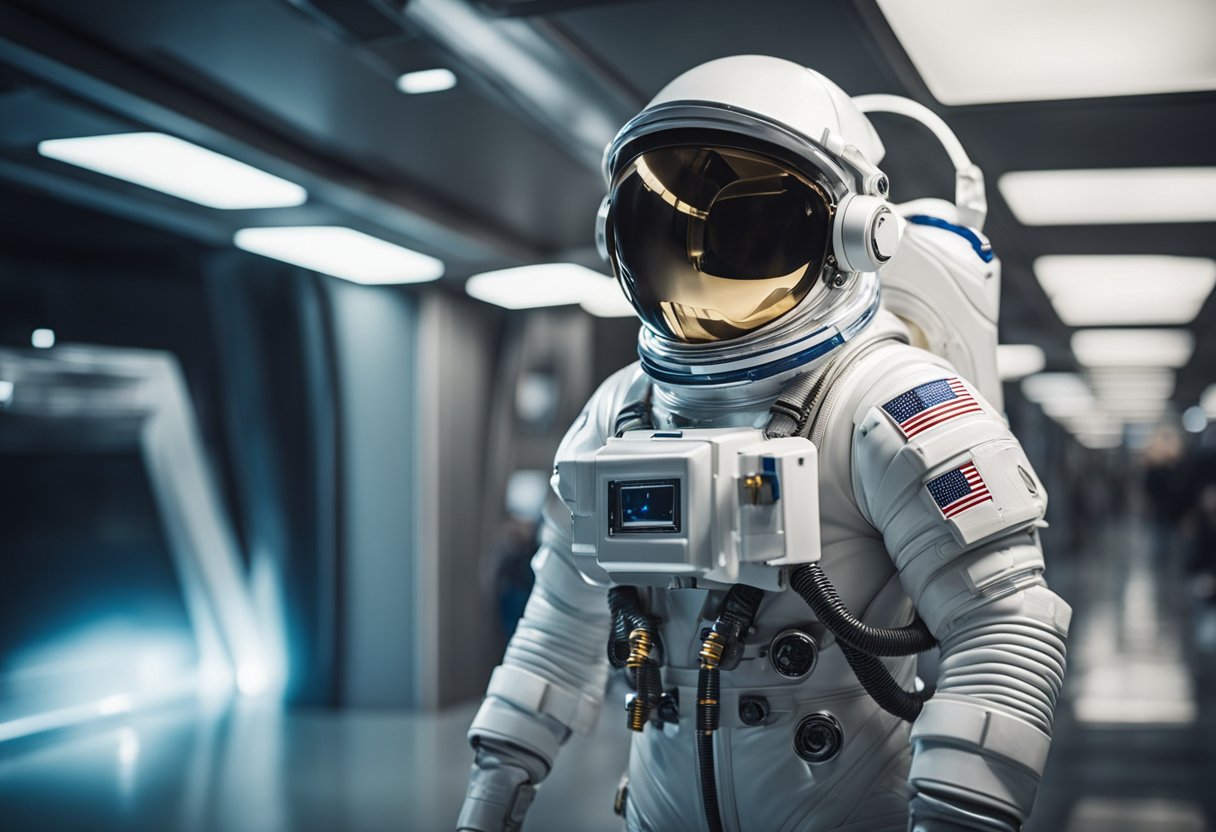
In ensuring the safety and performance of astronauts, we prioritise mobility and ergonomics in spacesuit design. These aspects are crucial for tasks requiring precision and a wide range of motion, such as repairs or scientific research in space.
Our spacesuit joints are engineered to maximise range of motion while minimising fatigue. We achieve this through rotatable bearings and flexible materials that mimic the movement of the human body. One of our main challenges is to balance mobility with the need to protect against the vacuum of space. Astronauts wearing suits with optimally designed joints can bend, reach, and twist with more dexterity, which is vital for manoeuvring in microgravity environments.
We’ve tailored the upper torso and gloves of our suits to accommodate a wide anthropometric range of astronauts. This attention to detail ensures that fine motor control is maintained in the gloves, crucial for operating tools and interacting with spacecraft interfaces. The hard upper torso (HUT) is designed to support these movements while protecting against impacts and providing a stable structure to anchor life support and communication systems. Adapting to an individual’s body through custom sizing and modifications, the upper torso development focuses on enhancing strength performance and lessening metabolic cost during extravehicular activities.
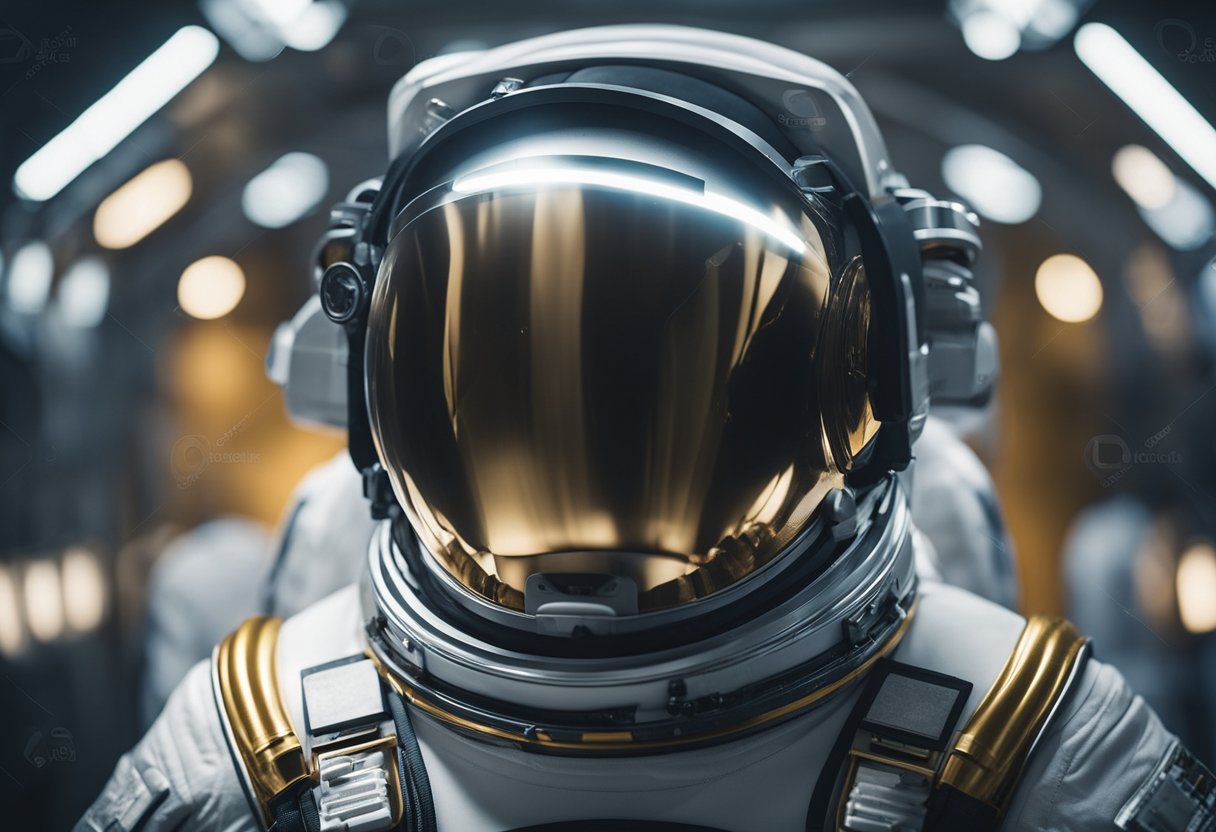
In space, the absence of atmospheric protection necessitates intricate systems within a spacesuit that supply oxygen and regulate temperature. Our focus here is the advanced technology that ensures astronauts can breathe and remain at a safe temperature.
Space suits employ a Portable Life Support System (PLSS), which provides a continuous supply of oxygen. This system is crucial for life support as it feeds oxygen to the helmet, allowing for normal respiration in the vacuum of space. A major concern is O2 safety, as pure oxygen can be highly reactive; historical incidents, such as Apollo 1, highlight the importance of stringent safety measures.
Astronauts face extreme temperatures in space; thus, their suits are equipped with thermal insulation to protect against the cold void of space and the intense heat from direct sunlight. The suit layers work together to maintain a stable internal temperature, which is vital for the safety and comfort of the astronaut.
We carefully design these systems, monitoring both the oxygen supply and thermal regulation, to ensure that future space exploration—whether for professional astronauts or for space tourism—is conducted safely and sustainably.
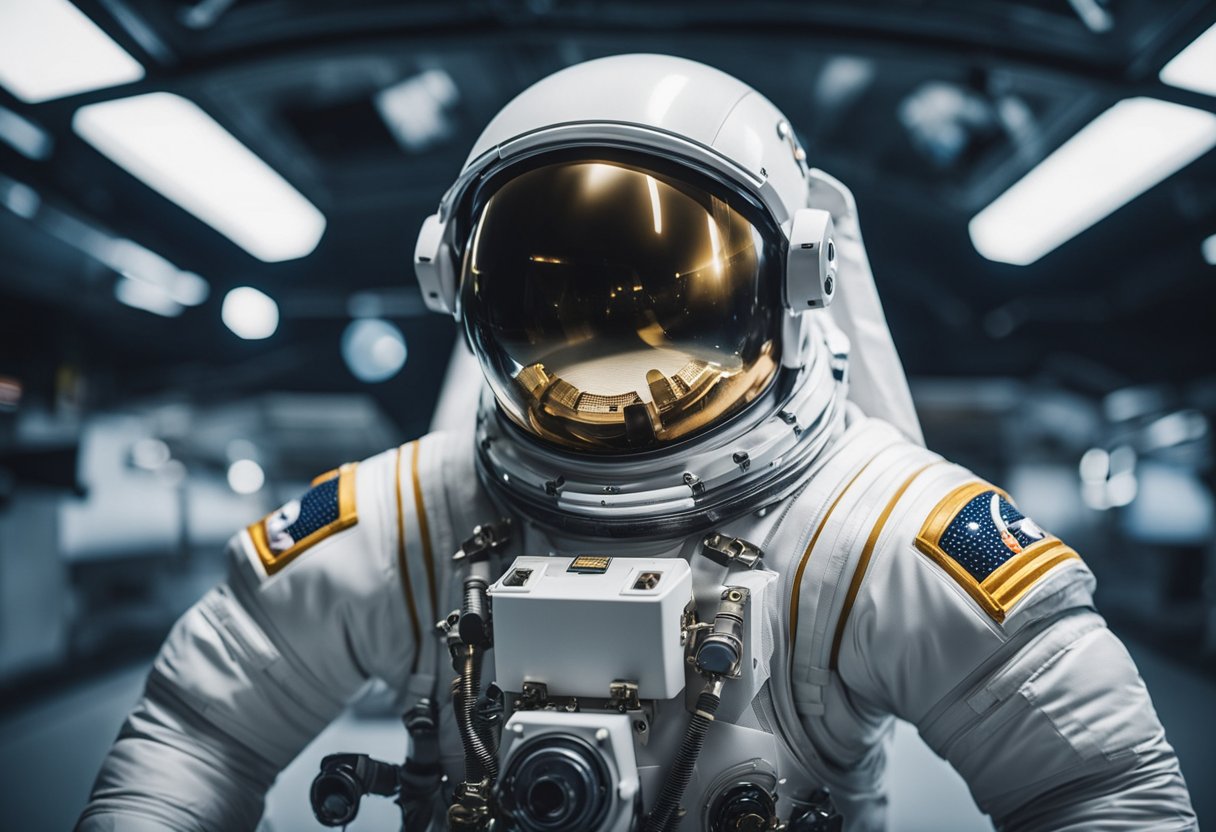
When considering space suits for various missions, we focus on the adaptability to the unique environments of celestial bodies such as the Moon and Mars. Our goals are to enhance safety and ensure the functionality of spacesuits under different gravitational forces, atmospheric conditions, and terrains.
On the Moon, we confront a vacuum environment and extreme temperature variations. The lunar surface presents a harsh environment with fine regolith that is abrasive to space suits. Our designs incorporate materials that resist puncture and abrasion while maintaining flexibility. Suit insulation is critical to protect astronauts from temperatures ranging from -173°C during lunar night to 127°C at lunar noon. We also integrate advanced life support systems to safeguard against the lack of atmosphere.
Our endeavours extend to Mars, where conditions include a thin carbon dioxide atmosphere, stronger gravity than the Moon’s, and dust storms that can span the planet. We are developing suits that can withstand these challenges, using insights into improving the functionality and mobility for planetary exploration. Furthermore, Mars missions might benefit from enhanced Portable Life Support Systems, which are critical for prolonged activities on the Martian surface. Our preparations for these missions involve rigourous testing and iterative design to adapt to the Martian environment, keeping in mind the future prospects of space and planetary exploration.
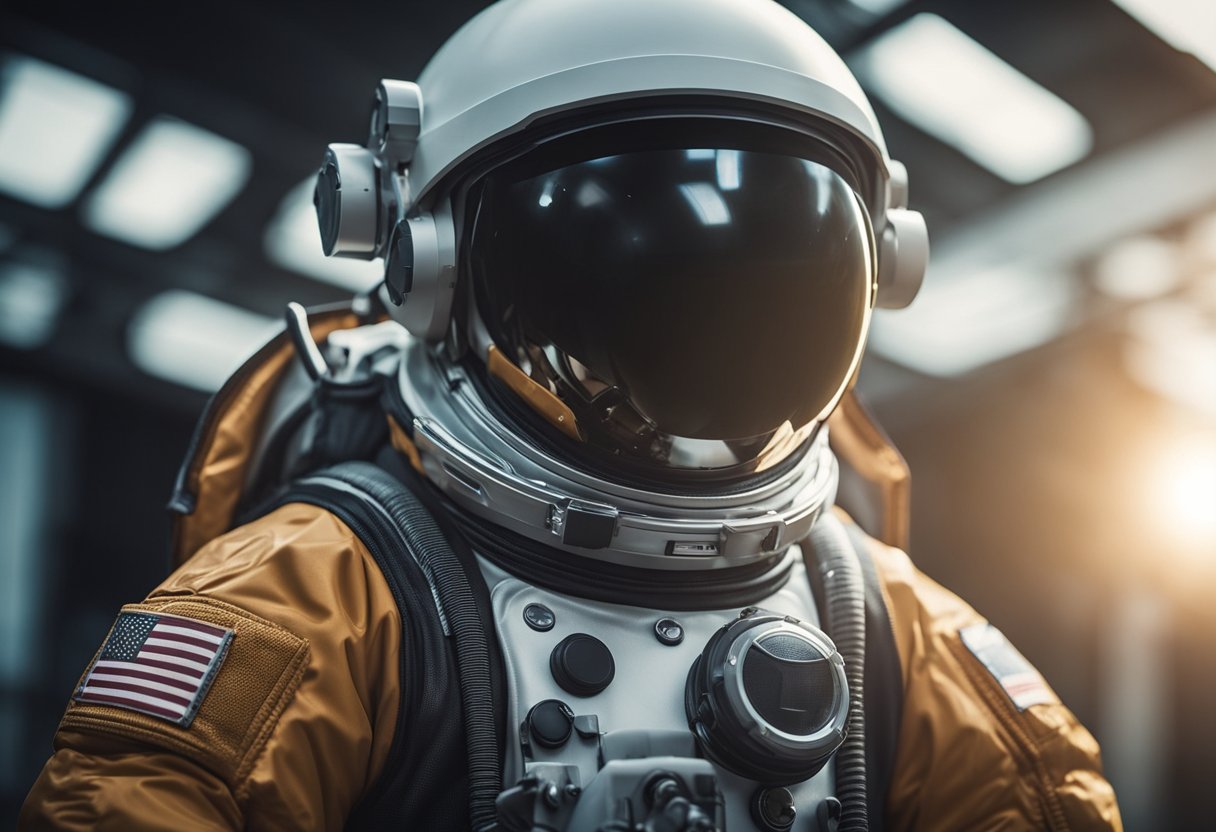
In designing spacesuits, our primary concern is to ensure the safety and well-being of astronauts by offering robust protection from the harsh conditions found in space. This encompasses safeguarding against intense radiation, maintaining bodily functions in microgravity and vacuum environments, and preventing injury from meteoroids and space debris.
The vacuum of space exposes astronauts to various forms of radiation that can harm human tissue and increase cancer risk. To address this, the materials used in our spacesuits include radiation-resistant layers that minimise exposure. These materials are carefully chosen for their effectiveness against both solar and cosmic radiation.
Our bodies rely on Earth’s gravity and atmosphere for basic life support – a luxury not afforded in space. Spacewalk suits, therefore, must be equipped with a portable life support system. This system provides oxygen for breathing and pressurisation, and it removes carbon dioxide to mimic aspects of Earth’s atmosphere for physiological stability.
Space is filled with micrometeoroids and orbiting debris that can travel at speeds exceeding 17,500 mph. To protect astronauts during extravehicular activities, spacesuit exteriors feature multiple layers designed to absorb and deflect the energy of impacts with such space debris. Shields and material composition are subjected to rigorous testing to ensure resilience against penetrative damage.
Spacesuits serve as personal spacecraft, their design intricately balancing the need for mobility with the utmost safety standards, allowing astronauts to explore and work in the most hostile environments we know. Through ongoing collaboration and innovation, spacesuit designs will continue to evolve, enhancing their capacity to shield astronauts from the dangers inherent to space travel.
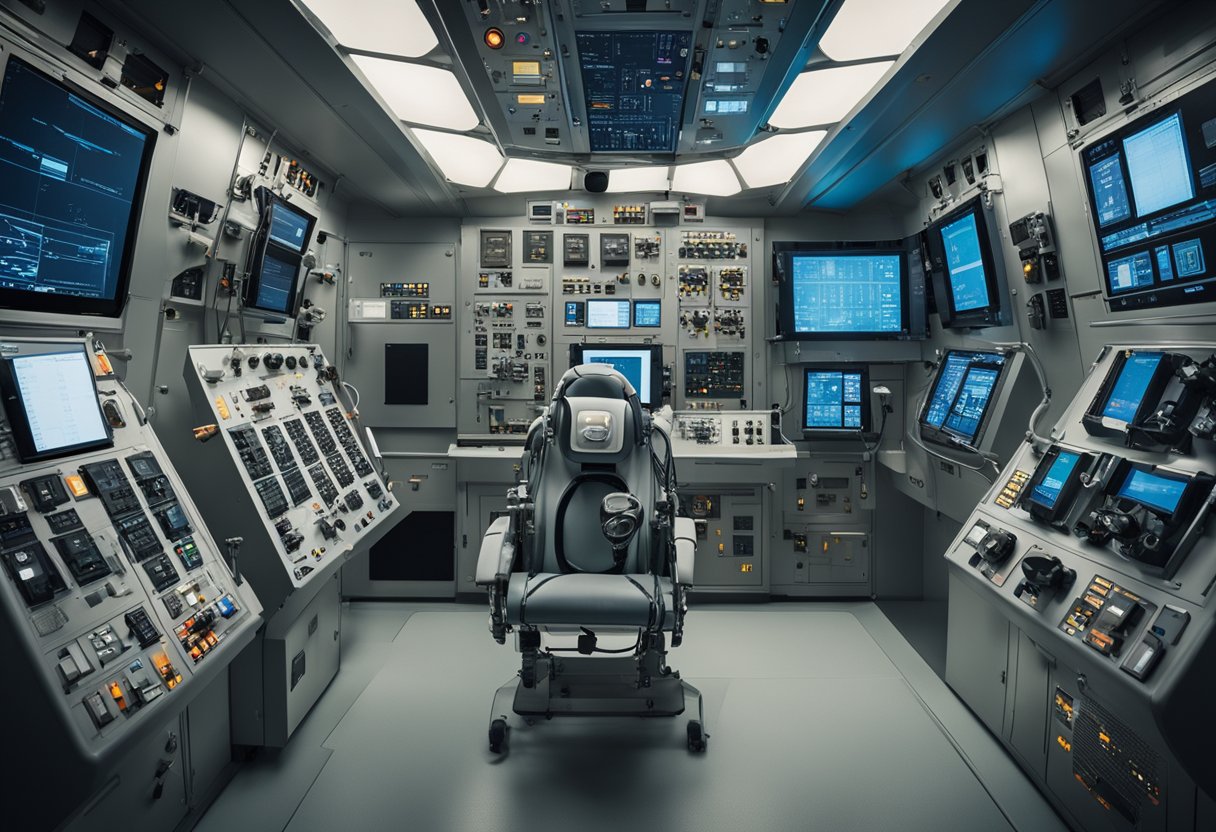
Within the intricate designs of space suits, the support and control systems are paramount for astronaut safety and mission success. These systems are complex networks that handle vital functions such as life maintenance and communication, critical for spacewalks whether in Earth orbit or low Earth orbit.
We equip our space suits with state-of-the-art communication systems to ensure constant interaction with the spacecraft and mission control. These systems include:
This integration of advanced communication technology is designed to withstand the unique challenges of space, ensuring that whether an astronaut is conducting a spacewalk or on a sojourn in low Earth orbit, they remain in constant contact with their team.
The life support system, often referred to as the “backpack,” is a critical component of modern space suits. It includes systems for:
Our space suit backpacks function as miniature spacecraft, carrying all necessary life support utilities. Designed with redundancy and the harshest conditions in mind, they allow astronauts to venture outside their spacecraft with confidence, knowing they have a reliable lifeline as they explore the domain beyond our planet.
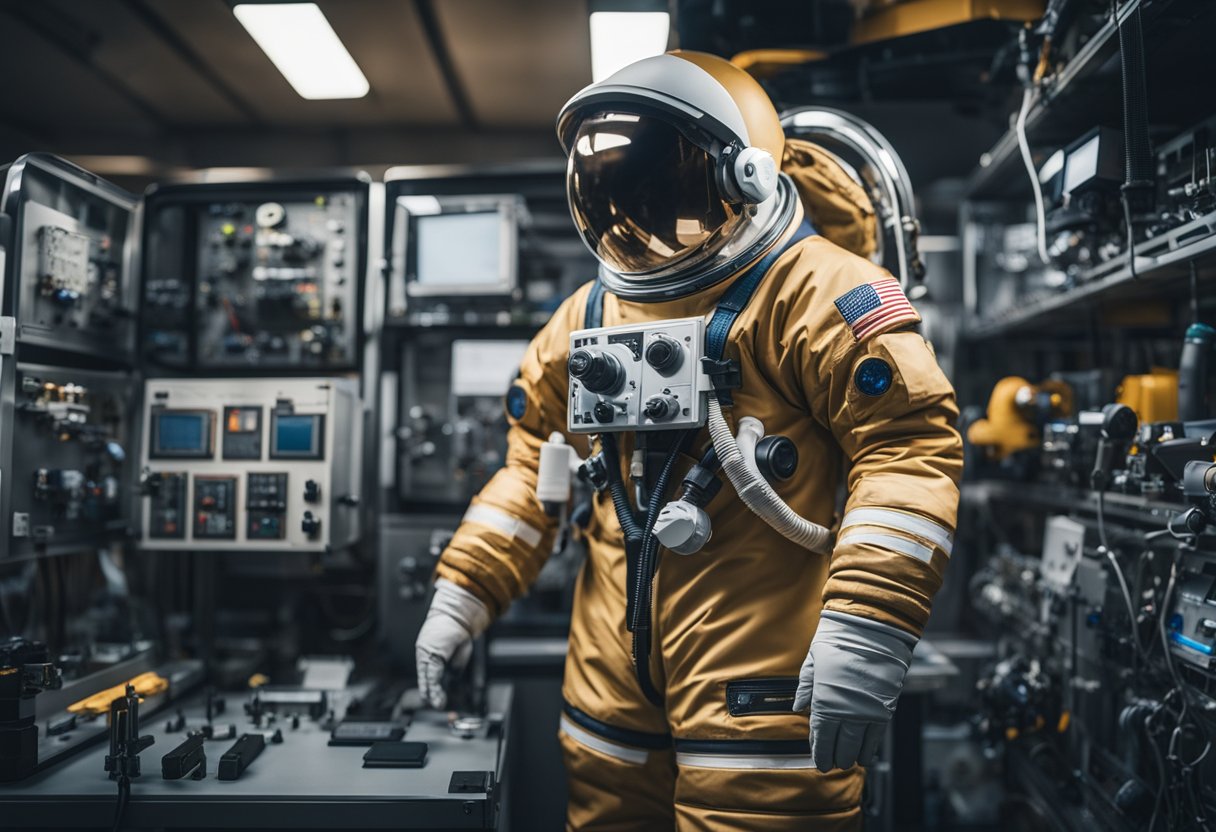
When we discuss astronaut preparedness for extraterrestrial missions, two cornerstones at NASA’s Johnson Space Center stand out: comprehensive facility training and the integration of underwater and virtual reality simulations. These essential components ensure that astronauts can safely operate spacesuits and perform tasks in environments that mimic the rigours of space.
At NASA’s Johnson Space Center, we have developed specialised training facilities to prepare astronauts for the complexities of space travel. Our space suits have evolved significantly since the early days of space exploration, preserving the safety and enhancing the mobility of astronauts.
One of our key installations for spacesuit training is the Neutral Buoyancy Lab (NBL), where astronauts undergo simulated weightlessness, similar to what they would experience in outer space. This underwater environment is instrumental in practising Extra-Vehicular Activities (EVAs), allowing for the fine-tuning of both suit functionality and astronaut skill.
Beyond the NBL, we’re leveraging sophisticated technologies such as Virtual Reality (VR) to train astronauts. The Virtual Reality Training Laboratory (VRL) at Johnson Space Center enables astronauts to engage in highly immersive simulations.
The VRL is effective in modelling entire space vehicles and environments, providing realistic scenarios where astronauts can interact with the elements of their missions in real-time. This combination of hardware-in-the-loop simulations and VR environments is essential for refining interactions with spacesuit interfaces and controls in a controlled yet realistic training platform.
Through these innovative training techniques and facilities, we assure that our astronauts are comprehensively prepared for the demands of living and working in space – ensuring their safety and mission success.
The realm of commercial spaceflight stands on the cusp of a new era with advancements in technology and design reshaping the future of how we approach the stars. From private companies participating in crew development to revolutionary spacesuit designs, the stage is set for a transformative period in space exploration.
We’ve been witnessing a marked shift from state-sponsored programmes to commercial space entities undertaking human spaceflight. This transition is enabling countries without indigenous launch capabilities to access space, often using the Soyuz spacecraft as a dependable veteran of space travel. Companies are now actively working towards safer and more efficient launches, focusing on both ascent and re-entry. Notable steps forward include collaboration between NASA and private companies such as SpaceX and Boeing, significantly changing the commercial crew landscape.
Our new spacesuits are tailored not only for safety but also for operability across diverse missions. They must endure extreme pressure differentials and thermal ranges while facilitating mobility. Companies like Axiom Space and Collins Aerospace, in conjunction with NASA’s expertise, are at the forefront, developing spacesuits that astronauts will use for expeditions to the Moon and beyond. These innovations are central to upcoming launches, ensuring astronaut safety during ascent and re-entry. Crucial features being refined include improved mobility, reduced weight, and enhanced life support systems, all vital for future commercial space travellers.
The development of spacesuits and crew vehicles is integral to the burgeoning space tourism industry. For those interested, SpaceVoyageVentures.com provides insights into potential future travels and experiences presently in the pipeline, showcasing how close we are to making recreational spaceflight a reality.
We aim to address common queries about the intricacies of space suit technology and how it keeps astronauts safe during missions.
Space suits are crafted using multiple materials that balance toughness and pliancy, such as layers of Teflon, Kevlar, and Nomex. These materials offer extreme resistance to abrasions and thermal stability, vital for withstanding the harsh conditions of space.
Today’s space suits are equipped with advanced life support systems that provide a steady oxygen supply, remove carbon dioxide, and regulate temperature through a liquid cooling and ventilation garment. This system ensures astronauts can breathe and stay comfortable.
A space suit comprises multiple layers, each with a distinct function. The innermost layer wicks moisture away from the skin, while the middle layers are responsible for thermal insulation and meteoroid protection. The outer layer is made of a blend of materials, including Gortex, to guard against micrometeoroids and solar radiation.
Recent advancements in space suit design include improved mobility joints and the use of lighter, more durable materials. These innovations enhance an astronaut’s safety by providing greater flexibility and minimising the risk of suit punctures during spacewalks.
A typical space suit weighs about 127 kilograms on Earth. However, in microgravity, its mass has less effect on movement. Astronauts train extensively to manoeuvre in their suits, using handrails and their own physical strength to navigate the microgravity environment.
Key safety features of space suits include micrometeoroid protection, thermal insulation, a fail-safe oxygen supply, and communications systems. Suits also have a built-in jet pack allowing astronauts to move safely back to the spacecraft if they become untethered.